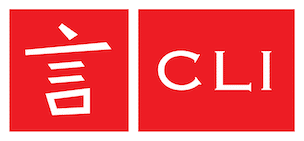How to Read and Write in Chinese: The Bopomofo System Explained
Learn Chinese in China or on Zoom and gain fluency in Chinese!
Join CLI and learn Chinese with your personal team of Mandarin teachers online or in person at the CLI Center in Guilin, China.
You’ve heard of pinyin, but have you heard of its Taiwanese cousin, Bopomofo? Read on to discover all there is to know about this alternative Chinese phonetic system.

Table of Contents
What is Bopomofo?
Bopomofo, officially called Zhuyin Fuhao (注音符号 Zhùyīn Fúhào) and often written as BOPOMOFO, is a phonetic system for transcribing Mandarin Chinese and related Chinese dialects. It is a tool for teaching Chinese reading and writing to young native-speakers and foreign language students.
Bopomofo is most commonly used in Taiwan. As the island’s official transliteration system, the Zhuyin script appears on computer keyboards and social media, and is taught in kindergartens, elementary schools and Chinese language centers across Taiwan.
The system consists of 37 symbols that each correspond with a specific sound in spoken Chinese. When several are combined and paired with their accompanying Chinese tone(s), these 37 symbols work to transcribe any spoken word into written Chinese.
Note that “Bopomofo” refers to the pronunciation of the first four symbols on the traditional Taiwanese keyboard, “ㄅㄆㄇㄈ,” rather like how “QWERTY” is used to refer to the first six letters of the English keyboard.
Keep in mind that if you’re based in mainland China, you are more likely to encounter an alternative romanization system called pinyin instead of Bopomofo.

Bopomofo, or Zhuyin Fuhao, is Taiwan’s phonetic system of 37 symbols, widely used for teaching Mandarin pronunciation and featured on keyboards and educational materials.
Etymology and origins
Bopomofo was first introduced to mainland China in the early 20th century by the Republican government that rose to power after the fall of the Qing dynasty. Originally the magnum opus of scholar Zhang Bingling (章炳麟 Zhāng Bǐnglín, who lived from 1869 to 1936, the system is based on ancient Chinese script and the most common linguistic sounds as were spoken at that time in the capital city, Beijing.
Due to centuries of social upheaval, diverse languages were spoken across the country for the majority of China’s imperial history, and dialects often varied greatly between towns and regions, as remains the case today.
In an effort to create a standardized national language and unite modern China, uniform writing systems like Bopomofo and Roman pinyin (罗马拼音 Luómǎ pīnyīn) were developed as a standard for spoken and written communication.
Bopomofo was officially used in mainland Chinese schools from 1928 until 1958, when it was replaced by pinyin as the transliteration tool of choice.

Bopomofo, developed in the early 20th century by scholar Zhang Bingling, served as a unifying phonetic system in mainland China before being replaced by pinyin in 1958.
Bopomofo in the modern world
Despite its loss of popularity in the mainland, Bopomofo remains the lingua franca of contemporary Taiwan. As mentioned above, it is the primary phonetic system used to teach reading and writing to Taiwanese students, just as the ABCs are used to teach kindergarteners and grade-schoolers in Western countries.
Most Taiwanese also use Bopomofo to type on their phones and computers and to look up characters in dictionaries.
Since certain words in Taiwanese Hokkien, or Taiyu (台语 Táiyǔ; a dialect commonly spoken in Taiwan), don’t have character equivalents, many Taiwanese use the phonetic symbols of Bopomofo to transcribe words in Taiyu.
If you’re watching a Taiwanese TV show or singing KTV during a night out with friends and you notice these symbols in the captions, you can safely assume that the language being spoken or sung is Taiwanese, not Mandarin.
If you study abroad in Taiwan, you’re sure to be trained in the art of Bopomofo by your teachers and textbooks.
Bopomofo is also commonly used in Chinese classes in various Asian countries, such as Vietnam, Indonesia, and the Philippines. In general, however, it is taught much less commonly than its counterpart system, pinyin.

Bopomofo remains central to Taiwanese education and daily life, used for typing, learning, and even transcribing words in Taiwanese Hokkien, while also appearing in Chinese classes across Asia.
Learning to read and write Bopomofo
Ready to learn Bopomofo? Fortunately, the learning process may not be as unfamiliar as you think. Just as young English-learners are taught to “sound-out” new words based on the sounds of the Latin alphabet, Bopomofo divides Chinese words into their phonetic components or sounds, with each sound represented by a character.
The thirty-seven symbols
The first step to becoming fluent in Bopomofo is to memorize the 37 symbols that compose its phonetic framework.
Check out the table below to see each Zhuyin symbol along with the corresponding phonetic pronunciation:
| Zhuyin | Pinyin |
|---|---|
| ㄅ | b |
| ㄆ | p |
| ㄇ | m |
| ㄈ | f |
| ㄉ | d |
| ㄊ | t |
| ㄋ | n |
| ㄌ | l |
| ㄍ | g |
| ㄎ | k |
| ㄏ | h |
| ㄐ | j |
| ㄑ | q |
| ㄒ | x |
| ㄓ | zh |
| ㄔ | ch |
| ㄕ | sh |
| ㄖ | r |
| ㄗ | z |
| ㄘ | c |
| ㄙ | s |
| ㄚ | a |
| ㄛ | o |
| ㄜ | e |
| ㄝ | ê |
| ㄞ | ai |
| ㄟ | ei |
| ㄠ | ao |
| ㄡ | ou |
| ㄢ | an |
| ㄣ | en |
| ㄤ | ang |
| ㄥ | eng |
| ㄦ | er |
| ㄧ | i |
| ㄨ | u |
| ㄩ | u |
As you memorize the symbols above, be sure to maximize your retention by listening along and repeating each sound using this handy Zhuyin sound chart.

Mastering Bopomofo begins with learning its 37 phonetic symbols, each representing a unique sound in Mandarin.
Building words with Bopomofo
In order to form a spoken Chinese word using Zhuyin, several of the above symbols are combined to “spell” its pronunciation.
Consider the word “team” in English,” which is made up of three distinct phonetic sounds: the “t” consonant + the “ea” vowel team + the “m” consonant. The letter groups “t”, “ea” and “m” could be considered three distinct symbols that, when combined together, form a word.
The 37 symbols of the Bopomofo system function the same way as the phonetic sounds “t,” “ea” and “m,” but are illustrated through symbols, rather than letters of the Latin alphabet.
In addition to symbols, words written in Zhuyin also include the corresponding tone mark as follows:
- 1st tone: (no tone mark)
- 2nd tone: ˊ (placed after the Bopomofo symbols)
- 3rd tone ˇ (placed after the Bopomofo symbols)
- 4th tone: ˋ (placed after the Bopomofo symbols)
- 5th tone: ˙ (placed before the Bopomofo symbols)
Side note: If you’re not fully confident in your understanding of Chinese tones, familiarize yourself with the essential five tones of Mandarin and their accompanying usage rules.

Bopomofo combines phonetic symbols and tone marks to "spell" the pronunciation of Chinese words, much like building sounds in English.
Writing words using Bopomofo
Confused about how to write words using Bopomofo? Let’s find out more about how this system works by taking a look at the Chinese character “好,” meaning “good.”
In Bopomofo, the word “好” is composed of the symbol ㄏ, representing the “h” sound, and ㄠ, representing the “ao” sound. Because “好” is the Chinese third tone, the symbol “ ˇ ” is also added following the characters. Therefore, the word “好” can be written in Bopomofo as “ㄏㄠˇ.”
Check out the below table to see more common Chinese words and their Zhuyin spelling:
| Chinese Character | Zhuyin | Pinyin |
|---|---|---|
| 它 | ㄊㄚ | tā |
| 我 | ㄨㄛˇ | wǒ |
| 得 | ㄉㄜˊ | dé |
| 吃 | ㄔ | chī |
| 在 | ㄗㄞˋ | zài |
In children's books and beginner Chinese textbooks used across Taiwan, corresponding Bopomofo symbols and tone marks appear alongside characters as small annotative hints, instructing the reader on how to pronounce each character. This method helps train learners to associate characters with their Zhuyin sounds.
Once students are able to pronounce most common characters by sight, they can eventually move on to texts that display characters only (sans their Zhuyin hints), thus gaining access to a wealth of Chinese reading material.

The Chinese character “好” is written in Bopomofo as “ㄏㄠˇ,” demonstrating how phonetic symbols and tone marks guide pronunciation in Taiwanese texts.
Bopomofo vs. Pinyin
Both Bopomofo and pinyin are handy options for those hoping to learn Chinese, though each method takes time and energy to master.
One language, two writing systems
Mandarin Chinese is the world’s most spoken language. Since most Mandarin speakers live in mainland Chinese where pinyin is commonly used, pinyin is the world’s most commonly taught and utilized Chinese transliteration system. It’s the official phonetic system of 1.8 billion people in mainland China, many of whom were taught pinyin in school and use it to type Chinese as adults.
Pinyin is also popular among Western language learners because words written in pinyin resemble those written in many European languages. This is because pinyin utilizes the Latin alphabet to transcribe Chinese words, rather than a configuration of unusual symbols like Bopomofo does.
However, advocates of Bopomofo argue that despite its outward complexity, the Zhuyin system is actually a more effective tool for teaching proper Chinese pronunciation.
While the pinyin system is based upon the sounds of the Latin alphabet, the 37 symbols of Bopomofo were developed in accordance with the sounds of standard Mandarin and may therefore train students' pronunciation to more accurately resemble that of native speakers.
Which transliteration system should you learn?
If you’re just beginning your quest toward Chinese fluency, you’ll need to decide which transliteration system is best suited to your unique goals.
Most learners, particularly those who plan to live, work, or study in mainland China, typically begin by learning the internationally-recognized pinyin system. Most Chinese textbooks and instructors overseas also use pinyin.
That said, if you are specifically interested in Taiwanese society or plan to spend significant time on the island, then do as the locals would and learn Bopomofo.

Choose pinyin for mainland China and international use, or Bopomofo if focusing on Taiwanese culture and language.
The more, the merrier!
What’s even better than choosing either Bopomofo or pinyin? Learning both, of course! Mastering these two fascinating writing methods will help improve your pronunciation, deepen your understanding of Chinese linguistics, and help you succeed using Mandarin regardless of your geographic location.
Fortunately, CLI’s team of international educators can help grant all your Chinese language-learning wishes.
Enroll in our online one-on-one lessons or join our intensive Immersion Program in Guilin to continue your journey into the depths of the endlessly fascinating world of Chinese.

Discover the beauty of Guilin, an incredible destination to immerse yourself in Chinese language and culture. Learn more about CLI’s programs in Guilin.
Bopomofo vocabulary
| Chinese Character | Pinyin | English |
|---|---|---|
| 注音符号 | Zhùyīn Fúhào | Bopomofo, the transliteration system officially used in Taiwan |
| 罗马拼音 | Luómǎ pīnyīn | Roman pinyin, the transliteration system officially used in mainland China |
| 拼读 | pīndú | to "sound-out" a word; to pronounce a word after menatally reading it phonetically |
| 工具 | gōngjù | tool (literal or figurative) |
| 字母 | zìmǔ | letter of the alphabet |
| 辅音 | fǔyīn | consonant |
| 元音 | yuányīn | vowel |
| 口音 | kǒuyīn | oral speech sound; accent |
| 标准 | biāozhǔn | an official standard |
| 系统 | xìtǒng | system |
| 写法 | xiěfǎ | way of writing a character; spelling |
| 键盘 | jiànpán | keyboard |
| 打字 | dǎzì | to type |
| 输入法 | shūrùfǎ | input method |
| 台语 | Táiyǔ | Taiwanese Hokkien |

Anias has lived, studied and worked in China and Taiwan for over 7 years. During this time, she has developed an expertise in Chinese culture and contemporary Chinese society. Anias holds a BA in East Asian Studies and Chinese Language from Bard College. She currently lives in Taiwan and is fluent in Chinese.












